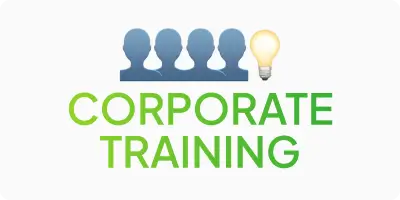
HR analytics is the process of collecting, analyzing and interpreting data related to a company’s human resources in order to improve the efficiency of personnel management. It involves the use of various tools and methods to evaluate various aspects of the HR department, such as recruitment, retention, productivity, training, and development.
The main components of HR analytics are
- Data collection: Gathering information from various sources such as human resource management systems (HRIS), employee surveys, productivity data, and financial metrics.
- Data analysis: Using statistical methods, models and algorithms to identify trends, patterns and anomalies in the data.
- Interpretation of results: Transforming the results into information that can be used to make management decisions.
- Forecasting: Using analytical data to predict future trends and develop HR strategies.
- Analyzing employee feedback: helps to improve working conditions and company performance. It is a very important element of team development and helps to unite the team.
What is HR analytics used for?
- Improving the hiring process: Data analysis helps to identify the most effective sources of hiring, define the profile of an ideal candidate, and reduce the time to fill vacancies.
- Employee retention: Identifying the factors that affect employee satisfaction and loyalty helps to develop strategies to reduce employee turnover.
- Productivity assessment: Analyzing productivity data allows you to identify the most effective employees and identify the reasons for low productivity among other employees, which helps to develop development and training plans.
- Career development planning: Using data to identify potential leaders and plan their development in line with the organization’s needs.
- Evaluation of training effectiveness: Analyze the results of employee training and development to determine which programs are most effective and how they can be improved.
- Strategic decision-making: The data obtained through human resource analytics supports strategic decision-making at the management level aimed at achieving the long-term goals of the organization.
HR managers analyze all the data and make decisions to improve the work environment and efficiency.
Types of HR analytics

HR analytics is divided into several main types, each with its own goals and methods. Here are the main categories:
Operational HR analytics.
Focuses on day-to-day HR processes such as HR management, hiring, and training.
Example:
- Analyzing the time to close vacancies.
- Evaluating the effectiveness of training programs.
Tactical HR analytics
Aimed at supporting the organization’s medium-term goals and strategies.
Example:
- Evaluation of staff turnover, reasons for dismissal, and the effectiveness of offboarding.
- Analyzing the effectiveness of reward programs.
Strategic HR analytics
Focuses on the long-term goals and development plans of the organization.
Examples:
- Forecasting staffing needs based on business strategy.
- Identifying potential leaders for future roles.
Financial HR analytics
Analyzing the impact of HR processes on the company’s financial results.
Examples:
- Measuring the ROI (return on investment) of training programs.
- Estimating the cost of employee retention.
Employee engagement analytics
Measuring the level of employee engagement and satisfaction.
Examples:
- Conducting employee satisfaction surveys.
- Analyzing data on attendance and participation in company programs.
Productivity analytics
Assessing the effectiveness of employees and teams.
Examples:
- Analyzing productivity using KPIs (key performance indicators).
- Identifying factors that affect productivity.
Predictive HR analytics
Using data to predict future trends and events.
Examples:
- Predicting employee turnover.
- Identifying skill needs for future projects.
HR data analytics tools and technologies
HRIS (Human Resource Information System)
This is a software for centralized management of employee information, including their personal data, work history, salary, leave, etc.
Functions that such technologies can help with:
- Automation of hiring and onboarding processes.
- Management of salary and compensation data.
- Tracking working hours and vacations.
Examples of such tools:
- BambooHR: Intuitive interface, focus on small and medium-sized businesses.
- Workday: A platform for large companies with powerful analytical capabilities.
BI (Business Intelligence) tools
Data analysis platforms that help transform information into visual reports and dashboards for decision-making.
Functions:
- Data visualization through graphs, charts, and tables.
- Interactive dashboards for monitoring key metrics.
Examples:
- Tableau: a platform for creating dynamic visualizations.
- Power BI: A tool from Microsoft that integrates seamlessly with other products.
Survey system
Platforms that help collect feedback from employees through questionnaires and surveys.
Functions:
- Creating different types of surveys (anonymous, open-ended questions)
- Analysis of results and data visualization.
Examples:
- SurveyMonkey: An easy-to-use tool for creating surveys.
- Qualtrics: A powerful platform for collecting and analyzing data with a focus on research.
CRM systems
Systems for managing relationships with candidates and employees that allow you to track the entire history of interactions.
Functions:
- Storing candidate contact information.
- Maintaining a history of communication and interactions.
Examples:
- Zoho CRM: Easy-to-use CRM for small and medium-sized businesses.
- Salesforce: One of the largest CRM solutions with advanced customization options.
Conclusion
HR analytics is very important for the development of the company’s atmosphere. By analyzing such indicators as the speed and sources of hiring specialists, the quality of candidates, the turnover rate and reasons for dismissal, the productivity and efficiency of employees. Conducting surveys in the company will help to get feedback, identify all existing growth areas, and improve HR processes in the company. To make human resource analytics more effective and easier, you should use HRIS, CRM systems, Business Intelligence tools, and survey systems. Use the right HR analytics to ensure that your company and employees always grow, develop, and reach new heights.












